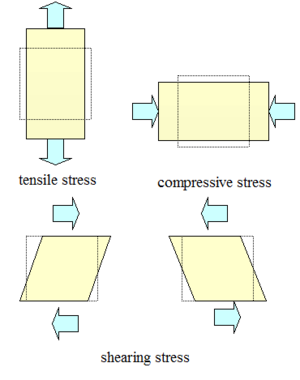Tendon Load and Capacity
Introduction[edit | edit source]
Understanding the concept of load and capacity is helpful when diagnosing tendon related problems. Different types of loads such as tensile, compressive and shearing loads can create various pathologies and correctly identifying this will help guide treatment.
Capacity[edit | edit source]
Capacity is a tissue's ability to withstand load without incurring damage or dysfunction. "A tissue is at full capacity when the individual can perform functional movements at the volume and frequency required without exacerbating symptoms or causing tissue injury" [1]. Injuries occur when a load placed on a tendon exceeds its capacity. Each tendon in the body has a specific capacity, and every individual has a unique level of capacity of their tendons. For example, the patella tendon of an elite athlete would, potentially, have a very high capacity and could undergo high levels of loading without any detrimental effects. Alternatively, a sedentary person's patella tendon would have a much lower capacity and a much smaller load could potentially cause an injury to the tendon.[2]
Load[edit | edit source]
Tendons undergo a variety of different loads. The cells that are responsible for tendon homeostasis are known as tenocytes. These cells are mechanosensitive and react to mechanical loads placed on them. When appropriate loads are placed on them, they respond favourably. However, when they are exposed to abnormal loads, they are negatively affected.[3] Optimal, progressive loads result in an increase in tendon integrity. This process happens slowly, and if too much load is placed on a tendon too quickly, they become susceptible to injury.[3] Tendons are just as slow to heal after an injury, which can make them challenging to treat.
Tendons can be subjected to tensile, compressive or shearing loads, and each of the loads affects the tendon differently. It can be helpful to identify the type of load that has resulted in the tendon pathology.
Tensile Load[edit | edit source]
Tensile stress is when two forces pull in opposite directions. All tendons are designed to withstand high tensile loads.[3] Tendons store and release energy, similar to a spring.[2] Activities involving speed such as jumping and changing direction place high tensile loads on tendons and can make them vulnerable to injury.
Compressive Load[edit | edit source]
Compressive forces occur in tendons where the tendons pass bony protuberances. During specific movements, the tendons become compressed against these bony protuberances. This occurs in many areas of the body. The Achilles Tendon is compressed at the superior calcaneus during ankle dorsiflexion and the gluteus medius and minimus tendons at the greater trochanter during hip adduction.[4] Tendons, such as the tibialis posterior and the peroneal tendons, have permanent pivot points at the medial and lateral malleoli respectively. Tendons are not only compressed by bony structures. The mid-portion of the Achilles is subjected to compressive and shearing loads from the surrounding musculature, tendons and the posterior retinaculum.[4]
Compressive forces on the tendon rarely happen in isolation. It is usually a combination of tensile forces with compression that places the tendon in a vulnerable state.[4] The role of compression plays an important factor in the management of tendinopathies. By reducing the compressive load, the tendon can often be successfully rehabilitated with progressive loading.[4]
Shear/ Friction Loads[edit | edit source]
Shearing forces can occur when the tendon undergoes repetitive activities such as kicking during swimming. These differ to high tensile loads as there is not that large storage and release of energy but rather repetitive motion. These forces can affect the sheath of the tendon as well as the structures surrounding the tendon. With shearing forces, the tendon rubs excessively on bony protuberances compromising the structures around the tendons (the paratenon) and creates an inflammatory response.[5] This paratenonitis is a different pathology to tendinopathy and recognizing the difference is important to implement correct management strategies.
References[edit | edit source]
- ↑ Cook JL, Docking SI. “Rehabilitation will increase the ‘capacity’of your… insert musculoskeletal tissue here….” Defining ‘tissue capacity’: a core concept for clinicians. British Journal of Sports Medicine Online. 2015
- ↑ 2.0 2.1 Rio E. Differential Diagnosis of Tendons Course. Physioplus. 2019
- ↑ 3.0 3.1 3.2 Galloway MT, Lalley AL, Shearn JT. The role of mechanical loading in tendon development, maintenance, injury, and repair. The Journal of bone and joint surgery. American volume. 2013 Sep 4;95(17):1620.
- ↑ 4.0 4.1 4.2 4.3 Cook JL, Purdam C. Is compressive load a factor in the development of tendinopathy?. Br J Sports Med. 2012 Mar 1;46(3):163-8.
- ↑ Wongsithichai P, Chang KV. Paratenonitis. Journal of Medical Ultrasound (2014) 22, 55e56







